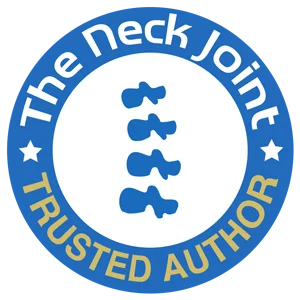Struggling with Sciatica in Santa Clarita CA?

How long have you or your loved one been putting up with sciatica in Santa Clarita CA? How severely is it affecting your daily life? Your ability to sit? Your ability to sleep? Your ability to work? Your ability to drive? Your ability to even stand up straight? If you are like most people who suffer from sciatica, you’ve probably dealt with the problem for a long time! On the other hand, it isn’t like you haven’t been looking for answers. You’ve probably been down the usual routes in the usual order: the ED, your GP, a physiotherapist, massage therapist, chiropractic, and back specialist, but you’re still dealing with the problem! How can that be so? What is actually going on? It can’t just be bulging discs! If you are still looking for answers and a natural solution to help your sciatica, here is where an alternative approach may be able to help you … one that you may never have considered before as the underlying cause of your sciatica in the first place: your upper neck!
Sciatica Symptoms and Causes in Santa Clarita CA
Sciatica is the common description for lower back pain alongside the pelvis and buttocks. Often, sciatica also involves pain that radiates into the hip, into the back of the thigh, along the leg, and into the foot. The cause of sciatica is usually attributed to two things: tight muscles and bulging discs in the lower back.
Tightness in the hamstrings, hip flexors, and a muscle called the piriformis are often found in people who suffer from sciatica. If so, massage or physiotherapy is aimed at stretching these muscles to take the pressure off the sciatic nerve. The thing about it is that muscle tightness is usually present on both sides of the body … but the pain is only on one side! What this means is that there has to be more to sciatica than just tight muscles.
You might ask why those muscles are tight in the first place. Muscles are controlled by nerves. Specifically, the muscles in your buttocks, thighs, and legs are controlled by nerves that originate from your low back (L4-S2). Bulging discs in the lower back are also commonly found in people who suffer from sciatica. If so, chiropractic, physiotherapy, or sometimes surgery is performed to reduce the pressure on the disc to take the pressure off the spinal nerves.
The thing about it is that 85% of people with no back pain or sciatica whatsoever have bulging discs in their lower back. In addition, the nerves that go to your lower back actually terminate near the small of your back around the L2 level … way above the site of the bulging discs! Yes, many routine treatments including massage, physiotherapy, chiropractic, and even surgery (when required) help relieve the pain of sciatica. However, there are many people who do not respond to these treatments at all! If so, they’re often left with no other choice but to deal with the pain on their own. It is for these particular people that it is worth exploring another reason that they are experiencing sciatica.
What to do About Sciatica
Sciatica isn’t just about the nerves in your lower back. It’s about your spinal cord as a whole!
Think of a balloon with a piece of string attached to the bottom. Essentially, this is your central nervous system. Your brain is the balloon, and your spinal cord is the string, which is anchored in at two primary sites:
- Where the base of your skull meets the top of your neck, including the top 3 vertebrae in your neck, by a layer of connective tissue called the dura mater plus ligaments called myodural bridges and
- Your tailbone (sacrum) is by an extension of tissue called the film terminal. The reason this arrangement matter is because movement - including injury or misalignment to either end of the spinal cord can produce a pulling tension that affects the other end.
Think about it. If you pull on the bottom of the string, it will pull the balloon downwards and create tension at the top of the string. … But if you pull from the top of the string, it will create tension at the bottom of the string.
So it is entirely possible that if you have been experiencing sciatica - tension of the nerves in your lower back - and especially if your symptoms have not improved even after doing exercises, massage, physiotherapy, chiropractic, or even surgery all directed at treating your lower back that the reason for your sciatica is actually coming from higher up in your spine: namely the bones in your upper neck.
Here is where a different type of care may be able to help your sciatica when others have not.
The type of care that focuses on the relationship between the structure of your neck and your nervous system - including the sciatic nerve - is probably not something you’ve heard about before. It’s called “upper cervical specific chiropractic.”
Unlike general chiropractors who may manipulate or “crack” the back, an upper cervical chiropractor is different as I will explain. Upper Cervical Chiropractic Sciatica Diagnosis
There are three steps to diagnosing conditions with your neck that could be causing sciatica: a structural assessment, a neurological assessment, and a specific x-ray assessment that shows the exact condition of your neck,
In our practice, we begin with the structural examination, which involves looking at your posture. Your posture may actually reveal why you are experiencing sciatica in the first place! If you have ever suffered an injury to your body, there is a certain normal way that your body is meant to compensate that minimizes the tension in your nervous system. On the other hand, abnormal compensations reveal multiple levels of injury (called a “jam” pattern). Abnormal compensation also shows where your body is bearing the brunt of the stress.
When it comes to sciatica, it has been my experience that there is a certain key abnormal compensation that happens in the lower back. When present, it means that your body has actually compensated the exact opposite way that it is supposed to … which means that the solution for your sciatica involves the exact opposite type of care that appears on the surface!
The challenge, if you are experiencing this type of sciatica, is that it is often a long process to achieve a breakthrough. On the other hand, it would explain why so many other treatments for your sciatica have not worked … and it would finally get you going in the right direction!
The next part of the assessment we perform is a neurological assessment, which verifies if your sciatica is actually coming from your lower back, or if it is coming from somewhere else like your neck. Nervous system testing is one of the most important things that we do to make sure that your brain and body are as healthy as they can be. In our practice, we use paraspinal computerized thermography as a routine procedure to test your nervous system.
The final part of the assessment is a detailed X-ray analysis of the structure and alignment of the joints in your neck. You’ve likely already had all kinds of lower back X-rays, CTs, and MRIs … but how many scans have you had of your neck?
Even if your back scans showed bulging discs, arthritis, or narrowing of your spinal canal, remember that there are many people who have these same problems but no sciatica whatsoever! Therefore, it’s important to consider that the tension that is causing your sciatica may also be coming from the top of your spine.
In our practice, the X-rays that we take are custom-tailored for your own bone structure, which allows us to see things that often go undiagnosed. Especially when you have been looking for a solution for your sciatica, we believe that it’s important to leave no stone left unturned.
Upper Cervical Chiropractic Treatment for Sciatica
The procedure that we use in our practice to help people with sciatica is called an “upper cervical specific adjustment.” The procedure is quite unlike a general chiropractic manipulation. What you may find most strange about the procedure is that we do not treat your lower back at all. Only your upper neck!
The reason we do this is to reduce the pressure on your lower back by addressing it from the top. If your upper neck is the actual source of tension, causing your sciatica, once we release it, your body starts to make normal adaptations in your lower back on its own! Then, over a reasonable period of time, as your body unwinds, we find that your lower back pain and sciatica change too!
Another thing different about an upper cervical adjustment is that there is no twisting or cracking of your spine. Instead, the correction is made where you are lying comfortably on your side. Then using only a small amount of pressure on the outside of your skin - about the same amount of pressure you would use to feel your pulse - a quick and light impulse is made to realign the C1 or C2 vertebrae in your neck.
Although the procedure is light, don’t be fooled into believing that it takes lots of force to change your lower back. The right amount of force - done in the right place at the time - may be all that your body needs to resolve the pain of sciatica. In closing, there are three important things to mention here.
First, upper cervical care is not a treatment for sciatica, The purpose of an upper cervical adjustment is to restore the alignment of the bones at the top of your neck so there is no abnormal pressure on your spinal cord and so that your body is able to heal itself naturally. So if your sciatica goes away after an adjustment, it is because it is a direct treatment: it is actually the byproduct of your body being healthier!
Second, as ideally as we would love for a single treatment to fix your sciatica, it is usually a process that takes time.
Moreover, if your body has indeed compensated the exact opposite way that it is meant, there may be a certain period where things feel worse before they feel better. Don’t misunderstand me: there is a fine line between feeling worse because you’re getting better versus feeling worse because you are getting worse. It is the reason that we perform the tests that we do on every visit to monitor your process and to know the difference.
Third and finally, before committing to any long-term process, the only logical initial step is to check that you have the type of sciatica that could be coming from a problem with the alignment of your upper neck. It is the reason I’ve emphasized throughout this article that the type of sciatica that we may be able to help is the type of sciatica that has not improved with standard or direct treatment of the lower back.
OFFICE HOURS
Monday
12:30pm - 5:30pm
Tuesday
12:30pm - 5:30pm
Wednesday
12:30pm - 5:30pm
Thursday
12:30pm - 5:30pm
Friday
Closed
Saturday & Sunday
Closed
Santa Clarita Chiropractor
25050 Peachland Ave #105
Santa Clarita, CA 91321





